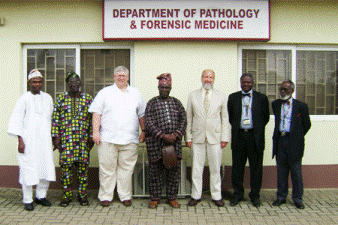Natural Resources, School of

Karl Reinhard Publications
Document Type
Article
Date of this Version
2009
Citation
Mem Inst Oswaldo Cruz, Rio de Janeiro, Vol. 104(Suppl. I): 9-16, 2009
Abstract
One hundred years since the discovery of Chagas disease associated with Trypanosoma cruzi infection, growing attention has focused on understanding the evolution in parasite-human host interaction. This interest has featured studies and results from paleoparasitology, not only the description of lesions in mummified bodies, but also the recovery of genetic material from the parasite and the possibility of analyzing such material over time. The present study reviews the evidence of Chagas disease in organic remains excavated from archeological sites and discusses two findings in greater detail, both with lesions suggestive of chagasic megacolon and confirmed by molecular biology techniques. One of these sites is located in the United States, on the border between Texas and Mexico and the other in state of Minas Gerais, in the Brazilian cerrado (savannah). Dated prior to contact with Europeans, these results confirm that Chagas disease affected prehistoric human groups in other regions outside the Andean altiplanos and other transmission areas on the Pacific Coast, previously considered the origin of T. cruzi infection in the human host.


Comments
Copyright 2009. Used by permission.